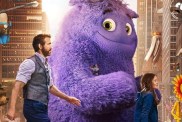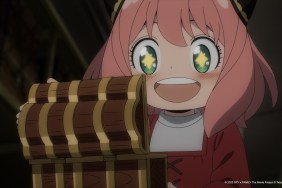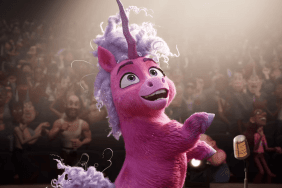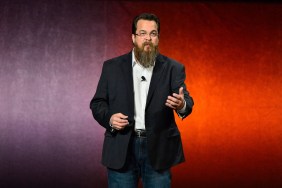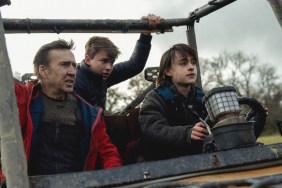Rhett Reese and Paul Wernick, the screenwriting pair behind 2009’s Zombieland, have carved out quite a niche for themselves, bringing their unique blend of action and humor to several of Hollywood’s major genre properties. This week sees the release of their G.I. Joe: Retaliation, a project that, as Reese explains, he’s been prepping since childhood.
The pair are also heavily involved in bringing the world of Zombieland to the small screen through Amazon Studios. A pilot has already been shot and, as announced this week, fans will have to opportunity to decide whether or not the show goes to series, streaming through the site’s Prime Instant Video.
Also heavily discussed in the below interview is Reese and Wernick’s script for Deadpool. Calling the script “our favorite script we’ve ever written,” the duo maintain that, even though the project seems to be temporarily stalled, they’ll do whatever it takes to get Marvel’s “Merc with a mouth” into theaters as an R-rated action comedy.
Warning: The below interview contains some spoilers.
CS: How did “G.I. Joe: Retaliation” end up coming your way?
Rhett Reese: Well, it came across our desk because we had just written “Zombieland.”
Paul Wernick: The summer of 2009.
Reese: They asked if we’d be interested in writing “G.I. Joe” and I was a huge, huge fan of the comics and the toys as a child. My very first home movies I made with the G.I. Joe characters. We really jumped at it. There was a chance to audition and we went for it. We pitched them a vision for the movie against a bunch of other writers and they hired us.
Wernick: I have a son who was six at the time. He wasn’t able to see “Zombieland,” obviously, and won’t for a long time. This was an opportunity to make a movie for him, too, and that was very exciting for me.
CS: What goes into a pitch like that? Is it a full presentation? Do you already have the story mapped out?
Wernick: We pitched the movie from start to finish. It took us about an hour to present it. You’re competing against a bunch of other writers to do it and, obviously, it’s a very sought-after job because it’s a big movie and a franchise and a sequel to a movie that made money. It’s a movie that’s definitely getting made and, in this town, it’s hard to get movies made. It’s especially hard to get movies made. We find that on a day-to-day basis, “Deadpool” being the prime example.
Reese: We’re pushing the boulder on that one, still. It’s been years.
Wernick: We also felt like we had a great in to the story and we were really excited about it, creatively.
CS: One of the cool things about it is that the story is such a medley of genres. There’s a ninja movie. There’s a military movie.
Wernick: Yeah, interestingly, it was kind of two parallel tracks of stories. There’s the Storm/Snake story and the G.I. Joe revenge story. We pitched it as two parallel-but-intertwined stories that ultimately come together at the end, in the final set piece of the third act where Snake Eyes comes and has Storm Shadow with him. In a way, it was writing two movies.
Reese: In some ways, yeah. Snake Eyes is a very difficult character to write because he can’t talk and he wears a black mask always. You can’t really have him in public interacting with people. It’s hard to have him in a scene with other people because it starts to get a little silly. You have to figure out physical things for him to be doing. We kind of centered it around the pursuit of Storm Shadow and the kidnapping of Storm Shadow and the turning of him from bad guy to good guy.
Wernick: We also wanted to work in a mislead about having him talk in his prison scene.
CS: I liked that a lot. I was genuinely angry for a second.
Wernick: That was totally intended. We wanted fans to react like that for just a split second. “Who gave them the keys to the car?!”
CS: Sort of to that same point, there’s a whole segment that homages the “Silent Interlude” comic book where a full scene plays for about ten minutes without dialogue.
Wernick: That was in the original pitch. Larry Hama and his “Silent Interlude” obviously inspired Rhett in great ways as a child. The idea of working it in to a major spring/summer tentpole with no dialogue was kind of revolutionary. We didn’t think the studio would let us do it.
Reese: We said, “Give us ten minutes. Ten minutes without any lines.” They were like, “Okay!” Once they saw the scene on the page, they realized why it would be so cool. It’s a story that, much like that comic, you just didn’t need words to tell. It’s very physical. You know Storm Shadow is holed up there with all of his buddies. You know that these two people have to get him out. It just plays from there. We envisioned it originally taking place half in the monastery and half the chase down the mountain and we pitched squirrel suits, those flying suits, as a means of escape. Lorenzo di Bonaventura, the producer, was working on “Transformers” at the same time and said, “I hate to break it to you, but we’re using those in ‘Transformers.'”
Wernick: We were devastated. We were like, “There goes that sequence!”
Reese: We went back to the drawing board and went on the internet where we discovered a rock climber named Dan Osman who does this thing called rope jumping. Basically, he fixes a bunch of ropes into the side of a mountain. He jumps off the mountain and uses his rock climbing ropes to rest his fall and he swings around and stuff. He died doing this, very tragically. Before he did, he made a bunch of videos of himself doing it. We discovered them and thought, “Oh my god. That’s the perfect means for them to escape.” Flying on ropes meant we could do a kind of Tarzan and Jane thing with ziplines and ultimately a joust on the side of a mountain. It kind of came together. It was really exciting to see that happen. Jon did a great job directing it and I think it’s our favorite part of the movie.
CS: Wasn’t there an old Joe toy, too, that came with a zipline backpack?
Reese: You know, that’s funny. Now that you say that, that’s coming back to me. I had forgotten that. That never entered our heads, but, in any case, it’s always good to have some zipline fun.
CS: Paul, were you as big a fan of Joe moving into this?
Wernick: I was absolutely a fan of Joe. Probably not as extreme as Paul. He had everything.
Reese: Everything but the aircraft carrier. The Flagg. It was so expensive that I couldn’t quite talk my parents into it and I could never save enough allowance.
Wernick: Every kid growing up in our day and age was a Joe fan.
Reese: I had everything. The hang glider. The F-14 Tomcat. I had the H.I.S.S. Tank. Everything.
Wernick: You were spoiled.
Reese: I was spoiled. I would spend all my allowance on it, too. I was always buying G.I. Joe stuff.
Wernick: I think Hasbro has paid you back.
Reese: By now, yeah. It’s win-win.

CS: How was it, then, to meet up with Jon, who is also a die-hard Joe fanatic?
Reese: That was so great. We needed that. We needed someone who came in and just got the tone and got the energy and the fun. He was exactly that guy.
CS: Ensemble films are doing very well lately and one of things that really drives them home for audiences are the little one-liners and character-specific moments that get injected into the screenplay. This is packed with little reference to old G.I. Joe file cards and episodes of the cartoon.
Reese: Yeah, there was a lot of lore that we wanted to wink at. Little things like Snake Eyes speaking for the first time. We just wanted to have fun with that because we knew it would, ultimately, appeal to the Joe fans.
Wernick: We went up to Rhode Island where Hasbro is based when we first signed on to the project. We kind of went to G.I. Joe school. It was really, really cool. They laid out all the characters and the toys and they said, “This and this and this.” We got action figures made of ourselves, which was just the greatest thing ever. It was just a thrill. It just brings out the kid in you.
CS: It seems like “Zombieland” was the film that came out that made you both Hollywood names, especially in terms of fanboy properties. Is that an association you’re happy to have fans make?
Wernick: Oh, absolutely. It’s funny. We finished “Zombieland” and were talking to the press about it, hailing “Zombieland” as this original idea in a town that doesn’t really make original ideas and that don’t usually go on to great success even if they actually get made. We were kind of thumbing our noses at the idea of, “All this town makes are sequels and comic book movies and stuff based on toys!” “Zombieland” came out and, literally the next week, we booked “G.I. Joe 2,” “Deadpool” and “Zombieland 2.” Comic books, sequels and toys.
Reese: We’re the ultimate hypocrites and we laugh about it.
Wernick: It’s a world that we love. We love the fantasy of playing in that sandbox. It just brings a huge smile to our faces. The idea of taking something that is a huge commercial property and swinging it left of center as we did with “Deadpool” is incredible. The fanboys are our people and we are them and they are us.
CS: When you are dealing with “fanboy” properties, though, how do you divorce yourself from being too close?
Wernick: Interestingly, I don’t think you can. I think you need to write for all the fanboys who are going to judge you based on the characters that they grew up with and that they love. I think you absolutely have to write with them in mind. That’s how you stay true to a property. If you don’t write with them in mind, you veer off from what the core of the character or the property is.
CS: So “Zombieland 2” is something that’s totally on hold now because of the TV series, right?
Wernick: It is.
CS: But you’re both heavily involved with the show?
Wernick: Very. We wrote the pilot and we’re show-running it. We shot the pilot in Atlanta about three weeks ago. We’re cutting it together now. It’ll air on Amazon in mid-April. We hope to get a series pick-up soon thereafter and then, probably in November, we’ll have a full 12-episode order. It’s always been our baby. We’ve lived with it for nine years now. We wrote a spec pilot for CBS in 2005, before it became a movie. We wake up thinking about it and we go to bed thinking about it. It’s a huge, huge thrill for us and one that I think the fans are going to be pleasantly surprised with how the pilot turned out. We’re fired up.
Reese: We’re very fired up. We have a new cast playing the same characters and they’re wonderful. Just wonderful. They really invoke the spirit of the characters without stepping on the original cast too much. They’re very different, but equally talented. We have a wonderful director who directed a movie called “Tucker and Dale vs. Evil.” He did a great job on the pilot. We’re just thrilled to give it new life and Amazon has given us that opportunity. It’s an exciting place to be.
CS: And this is a continuation or is it sort of like “M*A*S*H” or “Buffy the Vampire Slayer” where it’s re-inventing the film?
Reese: It’s sort of like “M*A*S*H,” yeah. It began as a TV pilot. It became a movie. We always had envisioned it as a series, so this really feels like episode two of the TV series with the movie being the pilot. The only real change is the cast. Everything else is the same. The world. The rules. The way we approach it. The way it’s shot. All those things.
Wernick: And, story-wise, it picks up from the movie. It’s two weeks later. They pulled out of Pacific Playland and they’re still in Los Angeles. They’re starting to head East on a road trip.
CS: How did the two of you meet and decide to work together creatively?
Wernick: We went to high school together in Phoenix. We’re old, old friends. Rhett came out to LA to be a screenwriter. I was a news producer and I jumped into reality TV. Our first collaboration was this hybrid scripted/unscripted reality show called “The Joe Schmo Show” in 2001. We came up with the idea and then we did that for a couple of years. A couple of seasons. That was the beginning of a wonderful partnership that has lasted now for 12, 13 years.
CS: When you look at comic books or any other properties now, are you more aware that you could be the one turning it into a film?
Reese: Sure. In the position that we’re in now, it’s not really a function of going out to find them. They kind of find us in a way. The agencies bring us various comics and various books all the time, asking, “Are you interested in this or that?” We see a lot of comics come across our desk without having to go out and search for them too hard. It’s just a question of, “Do we spark to it?” Do we love the characters? Is it well-written? Is the artwork cool? In the case of something like “Cowboy Ninja Viking,” we fell in love with it and pursued it. Other times, we don’t fall in love and decide not to do it. Comics are just a wonderful kind of proving ground or mad scientist laboratory where people can use their imaginations to come up with anything. They don’t have to worry about budgetary restrictions. I think that’s what’s so wonderful about them. They really are just purely created.
CS: Do you ever feel like approaching it the other way around? Saying, “This is a great original idea. Let’s do it as a comic!”
Wernick: Sure! We’ve thought about starting an original idea as a comic and potentially transitioning it into a movie. We’d want to conceptually structure it as a comic first, though, before it becomes a script in our heads.
Reese: We’ve also thought of taking things and going the route of a video game, too. That interests us at some point. We’ve always wanted a “Zombieland” video game, so that might still come to fruition. A story like “Epsilon,” which we wrote on spec and sold to Sony, was completely original but we’d love to see that become a video game or a comic book. We definitely enjoy different mediums and would love to work in them. Mostly, the problem is time. We don’t have a lot of hours in the day to devote to different things. If there are any restrictions on doing that, it’s just how many hours we have.

CS: It must be pretty exciting to be at the forefront of this new wave of television coming from things like Amazon and Netflix.
Wernick: What’s so great is that “Zombieland” is this out-of-the-box idea of this wish fulfillment post-apocalyptic world. It’s a new spin and very un-“Walking Dead”-like. The idea of forging new ground with a brand new network in a format that I think entertainment is going [is incredible.] I think we’re on the forefront of it. It’s pretty exciting for us and I think we’re able to do things on Amazon that we wouldn’t otherwise be able to do. The blood. The violence. The scares. The swearing. We can do all that on Amazon and not only do it, but they encourage it. We can make the show we want to make without the restrictions of being on a Fox or an NBC. The “Zombieland” that we’re doing is actually a half-hour format. Those are a very strict 22 minutes on networks. Our pilot is 26 minutes and, if we have a story that goes 26 minutes, we can make it that long. Amazon says, “Fantastic. If that’s the way to make the best story you can tell, make it 26 minutes.” It’s a little bit of the wild, wild west and a little bit of a whole new world. We feel that “Zombieland” is the perfect piece of content to fill that brand.
Reese: We love Amazon. They’re a wonderful company that takes risks and they’ve never really failed in any space. When they go into a space, they go very intelligently. They strategize and have a good reason for being there. So far, they’ve done a really, really incredible job of moving into new territories and planting their flag and staying there.
Wernick: They can also hit a button and blast a hundred million targeted audience members. Do you know how much a network would pay to be able to do that?
Reese: They have more hits on their homepage in a day than all the American television networks combined. On any given day, more people click on Amazon than have watched television in America. It’s crazy. Numbers like that make you sit up and take notice.
Wernick: The other big that appealed to us, because this is a big new network, we have the opportunity to be that signature show on a brand new network. On a brand new way to tell stories. Much like “The Joe Schmo Show,” which aired on Spike when they re-branded TNN to be Spike, we had the signature show. We’re hoping we can become that for Amazon.
CS: Is there any update on “Deadpool”? I know a lot of people are very, very eager for that one.
Reese: There isn’t. What has happened so far is that we wrote a script, which we subsequently developed. It actually leaked online, so it exists out there. It’s not hard to find, bizarrely. Since then, Fox gave Tim Miller, who’s our director and a wonderful guy who is brilliant at what he does, some money and had him go make a test sequence. He directed about a three-minute long test sequence from the movie, all built within a computer. Ryan Reynolds did the motion capture for it. He came in and did the voice for it in an audio session. It is awesome. It is the greatest three minutes.
Wernick: If we showed it to you right now, you would lose yourself.
Reese: So that’s out there. Ryan is still committed. Tim is still committed. It’s just a question of convincing the powers-that-be that we can make it at a price that’s reasonable to them and have it be an R-rated movie that can still make a lot of money. We love it when R-rated movies like “Bridesmaids,” “The Hangover,” and “Ted” do well.
Wernick: We’re hoping “Kick-Ass 2” does great because that could open people’s eyes to the audience that an R-rated comic book movie can bring in.
Reese: It’s our favorite script we’ve ever written. We really are proud of it and excited for it to happen more-so than anything we’ve ever done.
Wernick: People ask what our passion project is and you think it would be this small, independent project. Our passion project is actually “Deadpool.” We will, come hell or high water, get that thing made somehow. We’re so committed to it and we’ve got the greatest team around with Ryan and Tim. We won’t rest until it gets on screen.
(Photo Credit: Apega / WENN.com)


